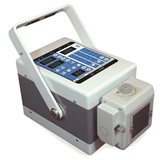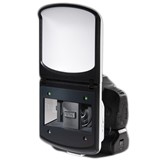Explore the best anaesthetic machines for sale in Australia. Get pricing insights, buying tips, and essential features to make an informed purchase decision.
Key Takeaways:
- Prices for anaesthetic machines in Australia range from $5,000 to $55,000+, depending on features, brand, and integration
- Entry-level machines suitable for general use or veterinary practices start at $5,000–$10,000.
- High-end models with integrated ventilators, gas scavenging systems, and touchscreen interfaces typically cost between $30,000–$55,000+.
- Operating costs include annual maintenance (approx. $800–$1,500) and regular replacement of filters, breathing circuits, and absorbents.
- Compliance is essential—machines must meet TGA certification and AS/NZS 3200 standards to be used legally in Australian healthcare settings.
- Key features to look for include precision vaporisers, integrated monitoring, and backup oxygen systems.
- Financing options such as leasing or business equipment loans can reduce upfront costs, with rates starting from 7.5% p.a.
Introduction
Whether you're outfitting a new medical facility or upgrading ageing equipment, choosing the right anaesthetic machine is essential to patient safety and surgical success. In Australia, anaesthetic machine procurement involves more than just price—compliance, training, warranties, and parts availability all matter. This guide breaks down everything you need to know to make an informed, cost-effective decision for your facility.
Types of Anaesthetic Machines and What They Cost in Australia
Choosing the right type of anaesthetic machine depends heavily on your facility’s clinical needs, patient volume, and budget. Below is a detailed breakdown of the main types available in Australia, what they're suited for, and what you can expect to pay.
1. Portable Anaesthetic Machines
- Price Range: $5,000 – $15,000
- Best For: Emergency response units, small clinics, rural or mobile healthcare services.
- Features:
- Compact and lightweight
- Basic gas flow and vapouriser controls
- May or may not include built-in monitoring or ventilators
- Limitations: Less suitable for complex surgeries; may require external ventilator or monitoring system.
2. Veterinary Anaesthetic Machines
- Price Range: $3,500 – $10,000
- Best For: Animal hospitals, vet clinics, research labs
- Features:
- Adapted for smaller lung capacities and gas volumes
- Oxygen concentrator compatibility
- Easily maintained; fewer parts than human-use systems
- Limitations: Not compliant for human healthcare applications.
3. Standalone Anaesthetic Machines (Mid-Range)
- Price Range: $15,000 – $30,000
- Best For: Day hospitals, dental surgery centres, small to medium hospitals
- Features:
- Dual-flow meters (O2 and N2O)
- Built-in vapourisers with temperature and pressure compensation
- Optional ventilator and CO2 absorber system
- Advantages:
- Easy to operate
- Reliable for routine general anaesthesia procedures
- Things to Watch: May require additional spend on patient monitors and advanced ventilation modes.
4. Integrated Anaesthesia Workstations (High-End)
- Price Range: $30,000 – $70,000+
- Best For: Operating theatres in private or public hospitals; facilities performing high-risk surgeries or requiring advanced respiratory support.
- Features:
- Touchscreen interfaces with digital gas control
- Integrated patient monitoring (SpO2, EtCO2, NIBP, ECG)
- Closed-loop anaesthesia delivery systems
- Real-time data export to hospital EMR systems
- Advantages:
- Full integration reduces error and improves surgical team workflow
- Better patient safety through alarms and fail-safes
- Additional Costs: Expect higher servicing and training costs due to complexity.
Important Cost Considerations Across All Types:
- Ventilator integration can add $5,000 – $15,000 depending on make and mode settings (volume/pressure-controlled etc.).
- Advanced monitoring systems can add another $8,000 – $20,000 to fully spec a machine.
- Consumables and accessories (tubing, circuits, absorbents) typically cost $500–$1,200 per year, depending on usage volume.
How to Choose the Right Machine Type:
- If you’re a solo practitioner or rural clinic, start with a reliable portable system that’s easy to maintain.
- For general surgeries or dental anaesthesia, a mid-range standalone machine with basic ventilation support is often sufficient.
- For hospitals or surgical centres, invest in integrated systems that offer full monitoring, remote data access, and compliance documentation.
Tip: Always request a demonstration from the supplier, and confirm how much is covered in your quote—some may exclude accessories or installation.
How Anaesthetic Machines Operate
Anaesthetic machines deliver a controlled mix of medical gases and anaesthetic agents to patients under care. The core components include:
- Flow Meters: Regulate oxygen, nitrous oxide, and air.
- Vapourisers: Convert liquid anaesthetic into a usable vapour form.
- Ventilators: Manage or support breathing in patients (available in mid-to-high-end models).
- Gas Scavenging Systems: Capture and eliminate waste anaesthetic gases.
- Monitoring Units: Track vital signs and gas levels in real-time for patient safety.
Key Parts and Maintenance Requirements
Consumable and Replaceable Components
- Breathing Circuits: Replace every 3–6 months.
- CO2 Absorbent Canisters: Weekly replacement or as usage demands.
- Tubing and Filters: Varies by frequency of use; refer to manufacturer guidelines.
- Vapourisers: Require regular calibration—typically annually.
Maintenance Costs and Schedule
- Routine Servicing: Annually (budget between $800–$1,500 per unit).
- Compliance & Calibration Testing: Recommended every 6–12 months.
- Emergency Support: Ensure supplier provides 24/7 availability or backup units.
Financing and Leasing Options
Managing capital expenditure is easier with flexible financing solutions. In Australia, common options include:
- Business equipment loans – typically start from 5.9% p.a.
- Lease-to-own arrangements – suited for growing practices wanting future upgrades.
- Operating leases – for off-balance-sheet advantages and tax deductibility.
Look for lenders who understand medical equipment procurement, including TGA-certified assets.
Warranty and Support Considerations
Most anaesthetic machines are backed by manufacturer warranties ranging from 12 to 24 months. These typically include:
- Parts and labour
- Vapouriser calibration
- Software updates and support for integrated systems
Ask your supplier about:
- Extended warranty options (up to five years)
- Loan equipment availability during repairs
- On-site technical support and training
Compliance and Certification in Australia
When purchasing an anaesthetic machine in Australia, compliance isn’t just a box to tick — it's a legal obligation and a patient safety priority. Whether you're setting up in a hospital, day surgery, dental clinic, or veterinary setting, your equipment must meet national regulatory requirements to be lawfully operated and to ensure staff and patient safety.
Failure to comply can lead to:
- Fines and penalties from regulatory authorities
- Equipment rejection by hospital administrators or insurance providers
- Increased liability in the event of an adverse event
Here’s what you must ensure before purchasing or installing any anaesthetic machine:
1. Therapeutic Goods Administration (TGA) – Legal Requirement
- All anaesthetic machines must be included on the Australian Register of Therapeutic Goods (ARTG).
- If a machine is not listed on the ARTG, it cannot be lawfully supplied or used in Australia for human medical purposes.
- Ask the supplier for:
- The ARTG number
- A copy of the TGA Certificate of Inclusion
- Documentation that matches the manufacturer, model, and classification
2. AS/NZS and International Safety Standards – Technical and Electrical Compliance
Anaesthetic machines fall under medical electrical equipment, and as such, must meet relevant Australian/New Zealand and international standards:
- AS/NZS 3200 Series:
- Covers general requirements for medical electrical equipment safety.
- Specific to how machines are built, tested, and protected against electrical hazards.
- IEC 60601-1 (and amendments):
- International benchmark for medical electrical safety.
- Includes protection from shock, fire hazards, mechanical instability, and fluid ingress.
- Other relevant standards may include:
- IEC 60601-2-13: Particular requirements for anaesthetic systems
- ISO 80601-2-13: Performance requirements for anaesthetic workstations
3. Installation and Facility Safety Requirements – Site Readiness and Legal Safety
Your anaesthetic machine must be installed in a way that meets electrical and safety codes specific to healthcare environments:
- Hospital-grade power outlets: Must be installed to support life-supporting electrical devices
- Proper earthing and circuit protection: Reduces the risk of electrocution or fire
- Room ventilation and gas scavenging systems: Required for safe removal of waste anaesthetic gases
- Biomedical engineer commissioning:
- A qualified biomedical technician or engineer must sign off on installation, calibration, and initial testing.
- Essential for both public and private facilities, and often required for insurance compliance.
- WHS Documentation:
- Keep a record of all installation documents, test results, and safety protocols.
- Required for compliance under Workplace Health & Safety regulations.
4. Post-Installation Responsibilities – Ongoing Compliance
Even after setup, you must continue to meet safety and operational standards:
- Scheduled servicing and calibration as recommended by the manufacturer
- Logbooks for inspections, faults, and repairs
- Operator training and competency assessments
- Emergency backup protocols (e.g. in case of power failure or oxygen supply interruption)
Common Buyer Questions
Do all anaesthetic machines include ventilators?
Not all. Lower-cost or portable models may require an external ventilator. Ventilator-equipped models typically add $5,000–$15,000 to the base cost.
Can I purchase a used anaesthetic machine?
Yes, but ensure:
- It’s listed with the TGA.
- All parts are calibrated and serviced.
- You receive a limited warranty and service documentation.
How long does an anaesthetic machine last?
With proper maintenance, a machine can last 10 to 15 years. Machines with software may need updates or replacement sooner depending on support lifecycles.
Is training included with the purchase?
For new machines, many suppliers offer complimentary on-site training. Confirm this during the procurement stage.
Are there any government incentives or rebates?
Potential options include:
- Instant Asset Write-Off for eligible practices
- Regional grants for rural health services
- Research and training grants for universities or labs
Conclusion
Investing in the right anaesthetic machine is a critical decision for Australian healthcare providers. From basic portable units to sophisticated integrated workstations, the best choice depends on your clinical needs, budget, and compliance obligations. Take the time to verify TGA approval, review warranty coverage, and work with reputable suppliers who offer ongoing support.










-160x160-state_article-rel-cat.png)




-160x160-state_article-rel-cat.png)









